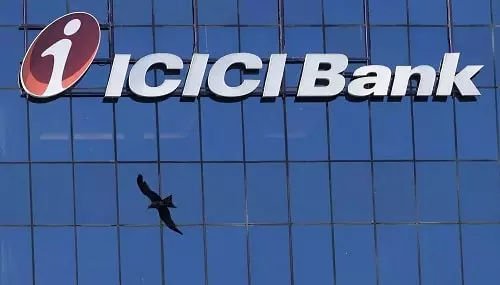ICICI Bank stands as a prominent figure in India’s private banking sector, demonstrating significant growth and resilience. A comprehensive SWOT analysis—evaluating Strengths, Weaknesses, Opportunities, and Threats—provides valuable insights into the bank’s current position and future prospects.
Strengths
1. Robust Financial Performance: In the quarter ending September 30, 2024, ICICI Bank reported a standalone net profit of ₹11,746 crore, marking a 14.5% year-on-year increase. This growth was driven by a 15.7% rise in the domestic loan portfolio and a 9.5% increase in net interest income, which reached ₹20,048 crore.
2. Extensive Network and Market Presence: With a network of 6,613 branches and 16,120 ATMs across India, ICICI Bank ensures widespread accessibility for its customers. Its international presence spans 11 countries, including subsidiaries in the United Kingdom and Canada, and branches in the United States, Singapore, and Hong Kong.
3. Digital Innovation: ICICI Bank has been a pioneer in digital banking, offering robust online platforms and mobile applications. The bank’s digital initiatives have enhanced customer experience and operational efficiency, contributing to its competitive advantage.
4. Strong Asset Quality: The bank’s asset quality has improved, with the gross non-performing assets (NPA) ratio declining to 2.15% as of September 30, 2024, from 2.30% in the previous quarter. The net NPA ratio also improved to 0.42%, reflecting effective risk management practices.

Weaknesses
1. Declining Net Interest Margin (NIM): Despite growth in net interest income, ICICI Bank’s NIM decreased to 4.27% in Q2 FY2025 from 4.53% in the same period the previous year. This decline indicates pressure on lending profitability due to increased funding costs.
2. Increased Provisions: The bank’s provisions and contingencies rose to ₹12.33 billion in the July-September quarter of 2024, up from ₹5.83 billion a year earlier. This increase suggests a cautious approach to potential bad loans but also impacts net profitability.
Opportunities
1. Expanding Digital Banking Services: The growing adoption of digital banking in India presents opportunities for ICICI Bank to introduce innovative financial products and services, catering to the evolving needs of tech-savvy customers.
2. Wealth Management Growth: The wealth management market in India is projected to grow at a compound annual growth rate (CAGR) of 15%, reaching USD 5 trillion by 2025. ICICI Bank’s wealth management division reported a 25% increase in new clients in FY2022, with assets under management (AUM) growing to INR 1 trillion, indicating significant growth opportunities.
3. Insurance and Mutual Funds Expansion: The insurance sector in India is expected to grow to USD 280 billion by 2025. ICICI Bank can leverage its insurance subsidiary, ICICI Lombard, which recorded a premium income of INR 177 billion in FY2023. In mutual funds, ICICI Prudential Mutual Fund saw a growth in AUM by 18%, reaching INR 4 trillion, presenting opportunities for expanding product offerings.
4. Partnerships with Technology Firms: The global fintech market is anticipated to reach USD 460 billion by 2025, providing immense partnership opportunities for ICICI Bank to enhance service delivery through collaborations with technology firms.
Threats
1. Intensifying Competition: The Indian banking sector is experiencing increased competition, with both traditional banks and new-age fintech companies vying for market share. This competition could pressure ICICI Bank to continuously innovate and adapt to retain its customer base.
2. Regulatory Changes: The Reserve Bank of India’s policies, such as allowing foreign banks to invest up to 74% in Indian banks, could alter the competitive landscape. Additionally, stringent regulatory requirements may impact operational flexibility.
3. Economic Uncertainties: Global economic fluctuations, including changes in interest rates and inflation, can affect the bank’s performance. Economic downturns may lead to higher default rates, impacting asset quality.
4. Cybersecurity Risks: With the increasing reliance on digital platforms, ICICI Bank faces the constant threat of cyber-attacks. Ensuring robust cybersecurity measures is crucial to maintain customer trust and safeguard sensitive information.
In conclusion, ICICI Bank’s strong financial performance, extensive network, and commitment to digital innovation position it favorably in the Indian banking sector. However, addressing challenges such as declining NIM and increased provisions, while capitalizing on opportunities in digital services and wealth management, will be essential for sustained growth. Remaining vigilant against competitive pressures, regulatory changes, economic uncertainties, and cybersecurity threats will also be critical in navigating the dynamic financial landscape of 2025.














